- Clone
- 10.1 (See other available formats)
- Regulatory Status
- RUO
- Workshop
- VI MA36
- Other Names
- FcγRI, FcR I
- Isotype
- Mouse IgG1, κ
- Ave. Rating
- Submit a Review
- Product Citations
- publications
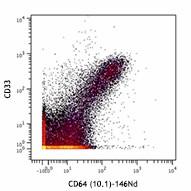
-

Human PBMCs stained with 158Gd-anti-CD33 (WM53) and 146Nd-anti-CD64 (10.1). Lymphocytes are displayed in the analysis. Data provided by DVS Sciences.
| Cat # | Size | Price | Quantity Check Availability | Save | ||
|---|---|---|---|---|---|---|
| 305029 | 100 µg | 129 CHF | ||||
CD64 is a 72 kD single chain type I glycoprotein also known as FcγRI and FcR I. CD64 is a member of the immunoglobulin superfamily and is expressed on monocytes/macrophages, dendritic cells, and activated granulocytes. The expression can be upregulated by IFN-γ stimulation. CD64 binds IgG immune complex. It plays a role in antigen capture, phagocytosis of IgG/antigen complexes, and antibody-dependent cellular cytotoxicity (ADCC).
Product DetailsProduct Details
- Verified Reactivity
- Human, Cynomolgus, Rhesus
- Reported Reactivity
- Baboon, Capuchin Monkey, Chimpanzee, Squirrel Monkey
- Antibody Type
- Monoclonal
- Host Species
- Mouse
- Immunogen
- Human rheumatoid synovial fluid cells and fibronectin-purified monocytes.
- Formulation
- Phosphate-buffered solution, pH 7.2, containing 0.09% sodium azide and EDTA.
- Preparation
- The antibody was purified by affinity chromatography.
- Concentration
- 1.0 mg/ml
- Storage & Handling
- The antibody solution should be stored undiluted between 2°C and 8°C.
- Application
-
FC - Quality tested
CyTOF® - Verified - Recommended Usage
-
This product is suitable for use with the Maxpar® Metal Labeling Kits. For metal labeling using Maxpar® Ready antibodies, proceed directly to the step to Partially Reduce the Antibody by adding 100 µl of Maxpar® Ready antibody to 100 µl of 4 mM TCEP-R in a 50 kDa filter and continue with the protocol. Always refer to the latest version of Maxpar® User Guide when conjugating Maxpar® Ready antibodies.
- Application Notes
-
Clone 10.1 recognizes the EC3 epitope of CD64. While both contain the EC3 domain, in-house testing suggests that clone 10.1 preferentially binds to CD64A (FcγRIA), but not CD64B (FcγRIB). Additional reported applications (for the relevant formats) include: blocking of human IgG3 and murine IgG2a binding to FcγRI2,5,6,11 and immunohistochemical staining of acetone-fixed frozen tissue sections12.
- Additional Product Notes
-
Maxpar® is a registered trademark of Standard BioTools Inc.
-
Application References
(PubMed link indicates BioLegend citation) -
- McMichael A, et al. Eds. 1987. Leucocyte Typing III. Oxford University Press. New York.
- Schlossman S, et al. Eds. 1995. Leucocyte Typing V. Oxford University Press. New York. p. 874.
- Kishimoto T, et al. Eds. 1997. Leucocyte Typing VI. Garland Publishing Inc. London.
- Holl V, et al. 2004. J. Immunol. 173:6274.
- Hober D, et al. 2002. J. Gen. Virol. 83:2169.
- Cho HJ, et al. 2007. Physiol Genomics 149:60.
- van Tits L, et al. 2005. Arterioscler Thromb Vasc Biol. 25:717. PubMed
- Bruhns P, et al. 2008. Blood 113:3716. PubMed
- Yoshino N, et al. 2000. Exp. Anim. (Tokyo) 49:97. (FC)
- Carter DL, et al. 1999. Cytometry 37:41. (FC)
- Dougherty GJ, et al. 1987. Eur. J. Immunol. 17:1453.
- Blom AB, et al. 2003. Arthritis Rheum. 48(4):1002-14. (IHC)
- Product Citations
-
- RRID
-
AB_2563759 (BioLegend Cat. No. 305029)
Antigen Details
- Structure
- Ig superfamily, type I glycoprotein, 72 kD
- Distribution
-
Monocytes, macrophages, dendritic cells, activated granulocytes
- Function
- Phagocytosis, ADCC
- Ligand/Receptor
- IgG receptor
- Cell Type
- Dendritic cells, Granulocytes, Macrophages, Monocytes
- Biology Area
- Immunology, Innate Immunity
- Molecular Family
- CD Molecules, Fc Receptors
- Antigen References
-
1. Hulett M, et al. 1994. Adv. Immunol. 57:1.
2. van de Winkel J, et al. 1993. Immunol. Today 14:215. - Gene ID
- 2209 View all products for this Gene ID
- UniProt
- View information about CD64 on UniProt.org
Related Pages & Pathways
Pages
Related FAQs
- Is our human Trustain FcX™ (cat# 422302) compatible with anti human CD16, CD32 and CD64 clones 3G8, FUN-2 and 10.1 respectively?
-
Yes
- Can I obtain CyTOF data related to your Maxpar® Ready antibody clones?
-
We do not test our antibodies by mass cytometry or on a CyTOF machine in-house. The data displayed on our website is provided by Fluidigm®. Please contact Fluidigm® directly for additional data and further details.
- Can I use Maxpar® Ready format clones for flow cytometry staining?
-
We have not tested the Maxpar® Ready antibodies formulated in solution containing EDTA for flow cytometry staining. While it is likely that this will work in majority of the situations, it is best to use the non-EDTA formulated version of the same clone for flow cytometry testing. The presence of EDTA in some situations might negatively affect staining.
- I am having difficulty observing a signal after conjugating a metal tag to your Maxpar® antibody. Please help troubleshoot.
-
We only supply the antibody and not test that in house. Please contact Fluidigm® directly for troubleshooting advice: http://techsupport.fluidigm.com/
- Is there a difference between buffer formulations related to Maxpar® Ready and purified format antibodies?
-
The Maxpar® Ready format antibody clones are formulated in Phosphate-buffered solution, pH 7.2, containing 0.09% sodium azide and EDTA. The regular purified format clones are formulated in solution that does not contain any EDTA. Both formulations are however without any extra carrier proteins.
Other Formats
View All CD64 Reagents Request Custom ConjugationCompare Data Across All Formats
This data display is provided for general comparisons between formats.
Your actual data may vary due to variations in samples, target cells, instruments and their settings, staining conditions, and other factors.
If you need assistance with selecting the best format contact our expert technical support team.
-
Biotin anti-human CD64
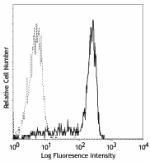
Human peripheral blood monocytes stained with 10.1 FITC -
FITC anti-human CD64

Human peripheral blood monocytes stained with 10.1 FITC -
PE anti-human CD64
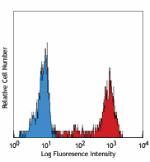
Human peripheral blood monocytes stained with 10.1 PE -
Purified anti-human CD64
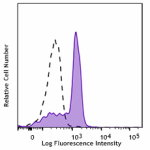
Human peripheral blood monocytes were stained with CD64 (clo... -
Alexa Fluor® 488 anti-human CD64
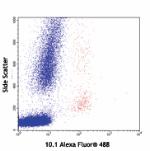
Human peripheral blood lymphocytes, monocytes, and granulocy... -
Alexa Fluor® 647 anti-human CD64
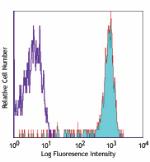
Human peripheral blood monocytes stained with10.1 Alexa Fluo... -
APC anti-human CD64
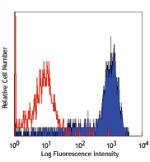
Human peripheral blood monocytes stained with 10.1 APC -
Pacific Blue™ anti-human CD64
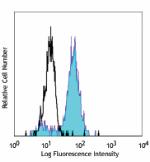
Human peripheral blood monocytes stained with 10.1 Pacific B... -
Brilliant Violet 421™ anti-human CD64
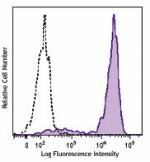
Human peripheral blood monocytes were stained with CD64 (clo... -
PE/Cyanine7 anti-human CD64
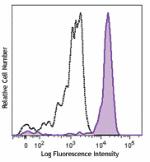
Human peripheral blood monocytes stained with anti-human CD6... -
PerCP/Cyanine5.5 anti-human CD64
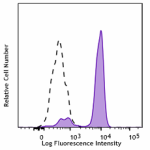
Human peripheral blood monocytes stained with CD64 (clone 10... -
APC/Cyanine7 anti-human CD64
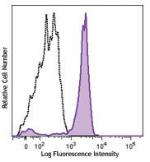
Human peripheral blood monocytes stained with anti-human CD6... -
Brilliant Violet 510™ anti-human CD64
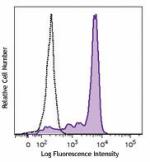
Human peripheral blood monocytes were stained with anti-huma... -
Purified anti-human CD64 (Maxpar® Ready)
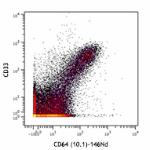
Human PBMCs stained with 158Gd-anti-CD33 (WM53) and 146Nd-an... -
PE/Dazzle™ 594 anti-human CD64
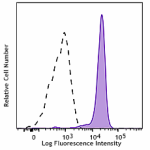
Human peripheral blood monocytes were stained with CD64 (clo... -
Brilliant Violet 605™ anti-human CD64
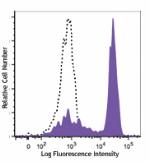
Human peripheral blood monocytes were stained with CD64 (clo... -
APC/Fire™ 750 anti-human CD64
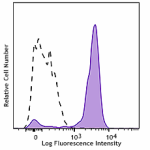
Human peripheral blood monocytes were stained with anti-huma... -
PE anti-human CD64
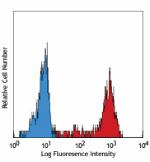
Typical results from human peripheral blood monocytes staine... -
PE/Dazzle™ 594 anti-human CD64
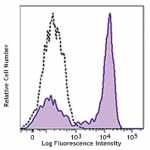
Typical results from human peripheral blood monocytes staine... -
FITC anti-human CD64

Typical results from human peripheral blood monocytes staine... -
TotalSeq™-A0162 anti-human CD64
-
Brilliant Violet 711™ anti-human CD64
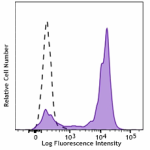
Human peripheral blood monocytes were stained with CD64 (clo... -
Alexa Fluor® 700 anti-human CD64
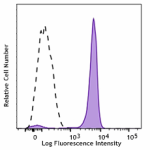
Human peripheral blood monocytes were stained with CD64 (Clo... -
Brilliant Violet 785™ anti-human CD64

Human peripheral blood monocytes were stained with CD64 (clo... -
TotalSeq™-C0162 anti-human CD64
-
Ultra-LEAF™ Purified anti-human CD64

Human peripheral blood monocytes were stained with CD64 (clo... -
TotalSeq™-B0162 anti-human CD64
-
TotalSeq™-D0162 anti-human CD64
-
GMP PE anti-human CD64
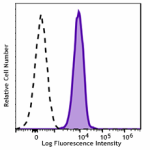
Typical results from human peripheral blood monocytes staine... -
GMP FITC anti-human CD64
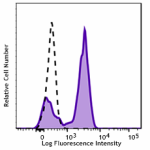
Typical results from human peripheral blood monocytes staine... -
Brilliant Violet 650™ anti-human CD64
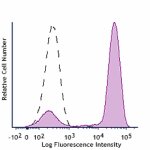
Human peripheral blood monocytes were stained with anti-huma... -
GMP PE/Dazzle™ 594 anti-human CD64
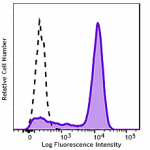
Typical results from human peripheral blood monocytes staine... -
PE/Cyanine7 anti-human CD64
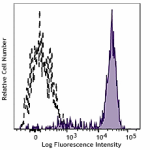
Typical result from human peripheral monocytes stained eithe... -
APC/Fire™ 750 anti-human CD64
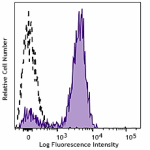
Typical results from human peripheral blood monocytes staine... -
PerCP/Cyanine5.5 anti-human CD64
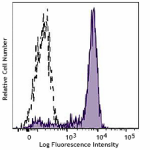
Typical result from human peripheral blood monocytes stained...
 Login / Register
Login / Register 













Follow Us